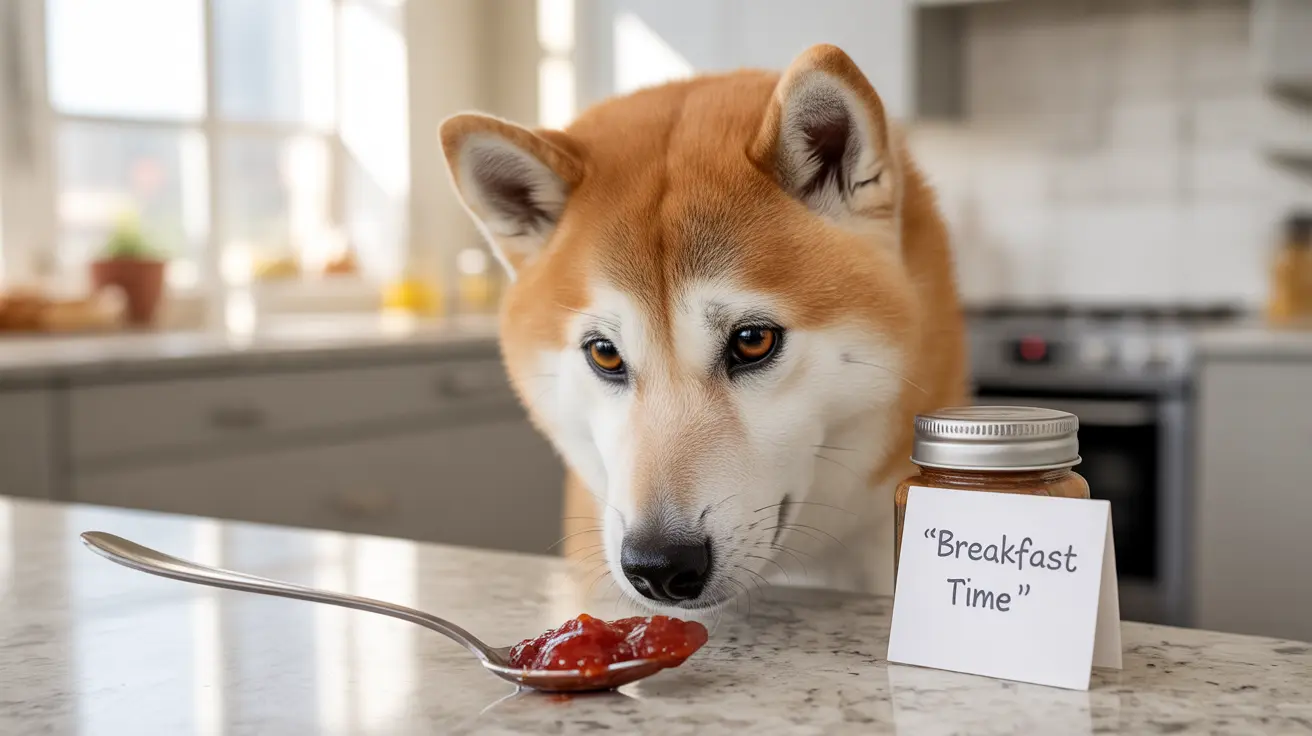Understanding the Components of Jam and Their Effects on Dogs
Jam typically consists of fruit, sugar, pectin, and acid components like lemon juice. While some of these ingredients aren't immediately toxic to dogs, the combination and quantities can pose significant health risks.
The primary concern lies in the high sugar content, which can make up 40-65% of the jam's composition. Dogs' digestive systems aren't designed to process such concentrated sweetness, leading to potential health complications.
The Sugar Problem: Why Jam is Dangerous for Dogs
Regular consumption of sugary foods like jam can lead to several serious health issues in dogs:
- Obesity and weight management problems
- Diabetes development or complications
- Dental decay and gum disease
- Digestive upset and discomfort
- Long-term metabolic changes
Hidden Dangers: Toxic Ingredients to Watch For
Some jams contain ingredients that are highly toxic to dogs:
- Xylitol (artificial sweetener) - can cause rapid insulin release and liver failure
- Grape or raisin jams - can lead to acute kidney failure
- Stone fruit pits (in poorly processed jams) - potential choking hazards
- Artificial preservatives and additives - may cause allergic reactions
What Happens If Your Dog Eats Jam?
If your dog consumes jam, the response should depend on the type and amount ingested:
For regular fruit jams:
- Monitor for digestive upset
- Watch for excessive thirst or urination
- Contact your vet if symptoms develop
For jams containing toxic ingredients:
- Seek immediate veterinary care
- Document the type and amount consumed
- Keep the product packaging for reference
Safe Alternatives to Jam for Dogs
Instead of jam, consider these healthy treat options:
- Fresh, dog-safe fruits (strawberries, blueberries, apple slices)
- Frozen fruit chunks (great for summer)
- Commercial dog treats formulated for canine nutrition
- Plain, unsweetened yogurt with fresh fruit
Prevention and Best Practices
To protect your dog from jam-related incidents:
- Store all spreads securely out of reach
- Train family members not to share human sweets
- Keep kitchen counters clear during food preparation
- Always read product labels for toxic ingredients
Frequently Asked Questions
Is it safe to feed my dog jam made from common fruits like strawberries or blueberries?
No, even jams made from dog-safe fruits are not recommended due to their high sugar content and potential additives. Fresh fruits are a much safer option.
What health risks can arise if my dog eats jam with high sugar content?
Dogs who consume high-sugar foods like jam risk developing obesity, diabetes, dental problems, and digestive issues. Long-term consumption can lead to more serious metabolic disorders.
Why is jam containing grapes, raisins, or xylitol dangerous for dogs?
Grapes and raisins can cause acute kidney failure in dogs, while xylitol causes dangerous blood sugar drops and potential liver failure. Even small amounts of these ingredients can be life-threatening.
What should I do if my dog accidentally eats jam?
Check the ingredients list first. If the jam contains xylitol, grapes, or raisins, seek immediate veterinary care. For regular jam, monitor your dog for digestive upset and contact your vet if concerning symptoms develop.
What are healthier treat alternatives to jam for dogs?
Fresh or frozen dog-safe fruits, specially formulated dog treats, or small pieces of lean meat are all better alternatives. Always consult your veterinarian for personalized treat recommendations.
Conclusion
While jam isn't immediately toxic to dogs (unless it contains specific dangerous ingredients), it's best to keep this sweet spread away from your furry friend. The high sugar content and potential for harmful additives make it an unnecessary risk to your dog's health.
Instead, focus on providing your dog with veterinarian-approved treats and fresh fruits that offer nutritional benefits without the dangers associated with processed spreads.






